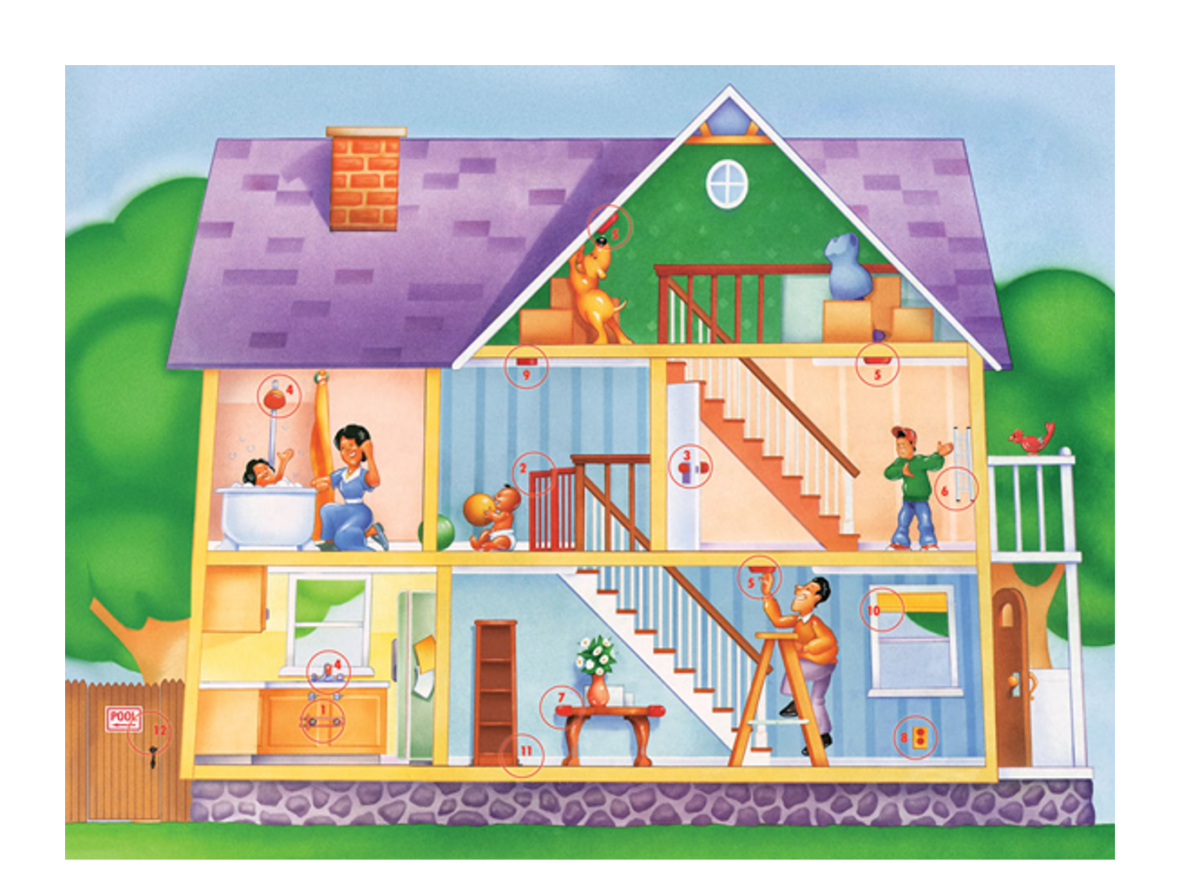Child Proofing Your Home
12 Safety Devices To Protect Your Children
Each year, children are injured by hazards in and around the home.
The good news is that the risk of injury can be reduced or prevented by using child-safety devices and reminding older children in the house to re-secure safety devices after disabling them.
Most of these safety devices are easy to find and are relatively inexpensive. You can buy them at hardware stores, baby equipment shops, supermarkets, drug stores, home improvement stores, on the Internet and through mail order catalogs. Safety devices should be sturdy enough to hinder access and yet easy for you to use.
To be effective, they must be properly installed. Follow installation instructions carefully. Remember, too, that no device is completely childproof; determined youngsters have been known to overcome or disable them.
Here are some child safety devices that can help reduce injuries to young children. The red numbers correspond to those on the image following the text.

- Use Safety Latches and Locks for cabinets and drawers in kitchens, bathrooms, and other areas to help prevent poisonings and other injuries.
- Use Safety Gates to help prevent falls down stairs and to keep children from entering rooms and other areas with possible dangers.
- Use Door Knob Covers and Door Locks to help prevent children from entering rooms and other areas with possible dangers.
- Use Anti-Scald Devices for faucets and shower heads and set your water heater temperature to 120 degrees Fahrenheit to help prevent burns from hot water.
- Use Smoke Alarms on every level of your home, inside each bedroom, and outside sleeping areas to alert you to fires.
- Use Window Guards and Safety Netting to help prevent falls from windows, balconies, decks, and landings.
- Use Corner and Edge Bumpers to help prevent injuries from falls against sharp edges of furniture and fireplaces.
- Use Outlet Covers and Outlet Plates to help prevent electrocution.
- Use a Carbon Monoxide (CO) Alarm to help prevent CO poisoning.
- CPSC recommends using Cordless Window Coverings in homes with young children, in order to help prevent strangulation.
- Use Anchors to Avoid Furniture and Appliance Tip-Overs.
- Use Layers of Protection with Pools and Spas.
Read the full article from the Consumer Product Safety Commission
What is Safe Sleep?
Babies sleep safest Alone, on their Backs, in a Crib for nighttime, nap time and every time.
Sleep-related infant death is the leading cause of infant mortality from one month to one year of age.
Sleep-related infant death can result from unintentional suffocation/strangulation. The best way to prevent sleep-related deaths is for all parents and caregivers to provide a safe sleeping environment for infants.
To prevent sleep related infant deaths, practice your ABC’s for every sleep.
Did you Know?
While infants should always be placed on their back to sleep, they need to be put on their stomach to play in the presence of an adult. Tummy time strengthens muscles important to a infant's development.
Infants will not choke when on their backs; this is an old myth. Infants should sleep on their backs for night time and nap time.
Bumper pads and similar products that attach to crib slats or sides are often used with the intent of protecting infants from injury. However, evidence does not support using crib bumpers to prevent injury. In fact, crib bumpers can cause serious injuries or death. Keeping them out of the sleeping area is the best way to avoid these dangers.
Safety at Home and School
It is important for kids to socialize at a young age and be able to have a certain level of freedom to grow and develop independence. It’s all about finding a healthy balance, which can be tough. The good news is, you can implement some basic safety rules for your children to abide by. This will help them become more aware of how they can protect themselves.
Learn more about some basic safety rules to implement at your home on the safehome.org website.
